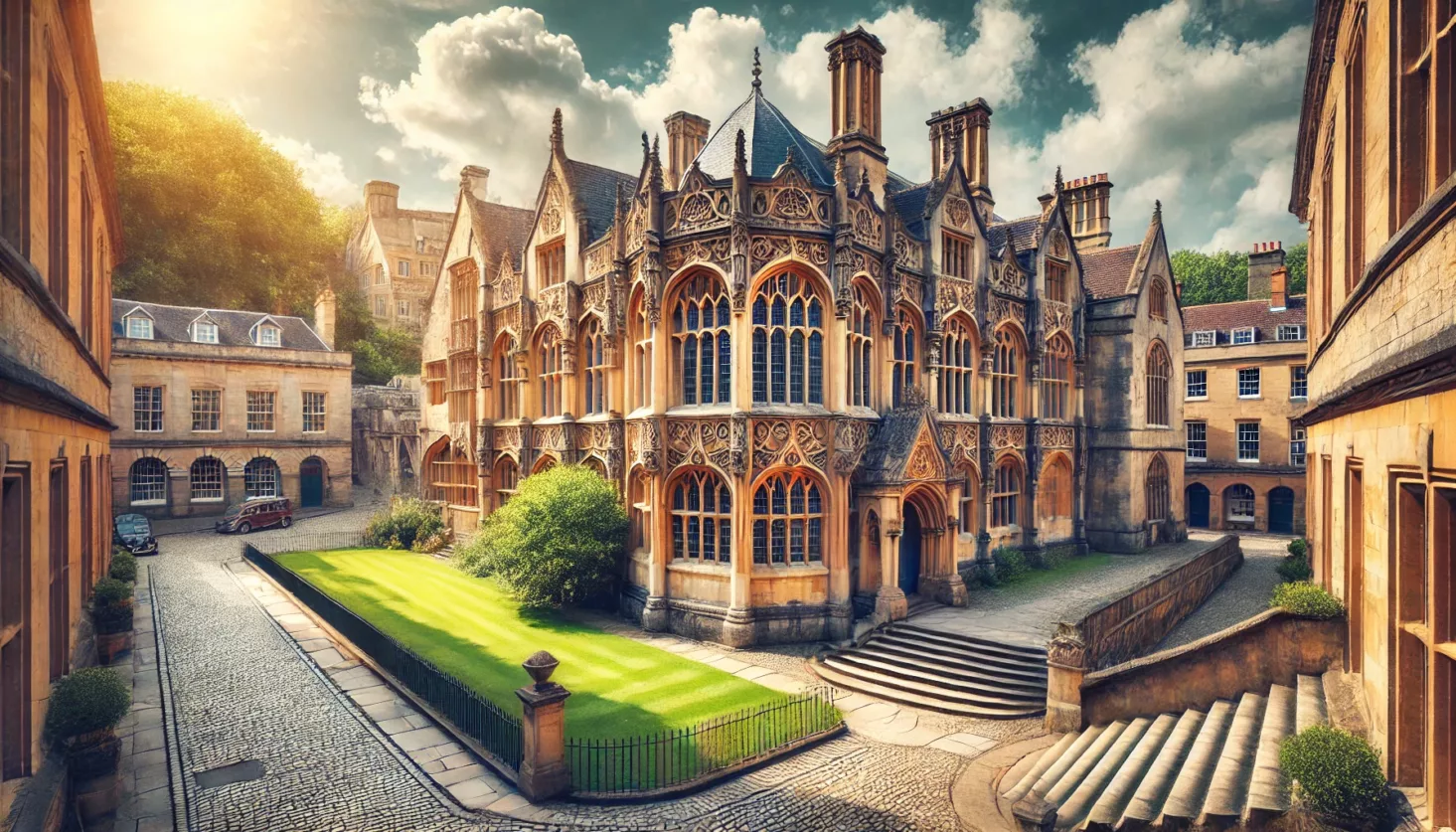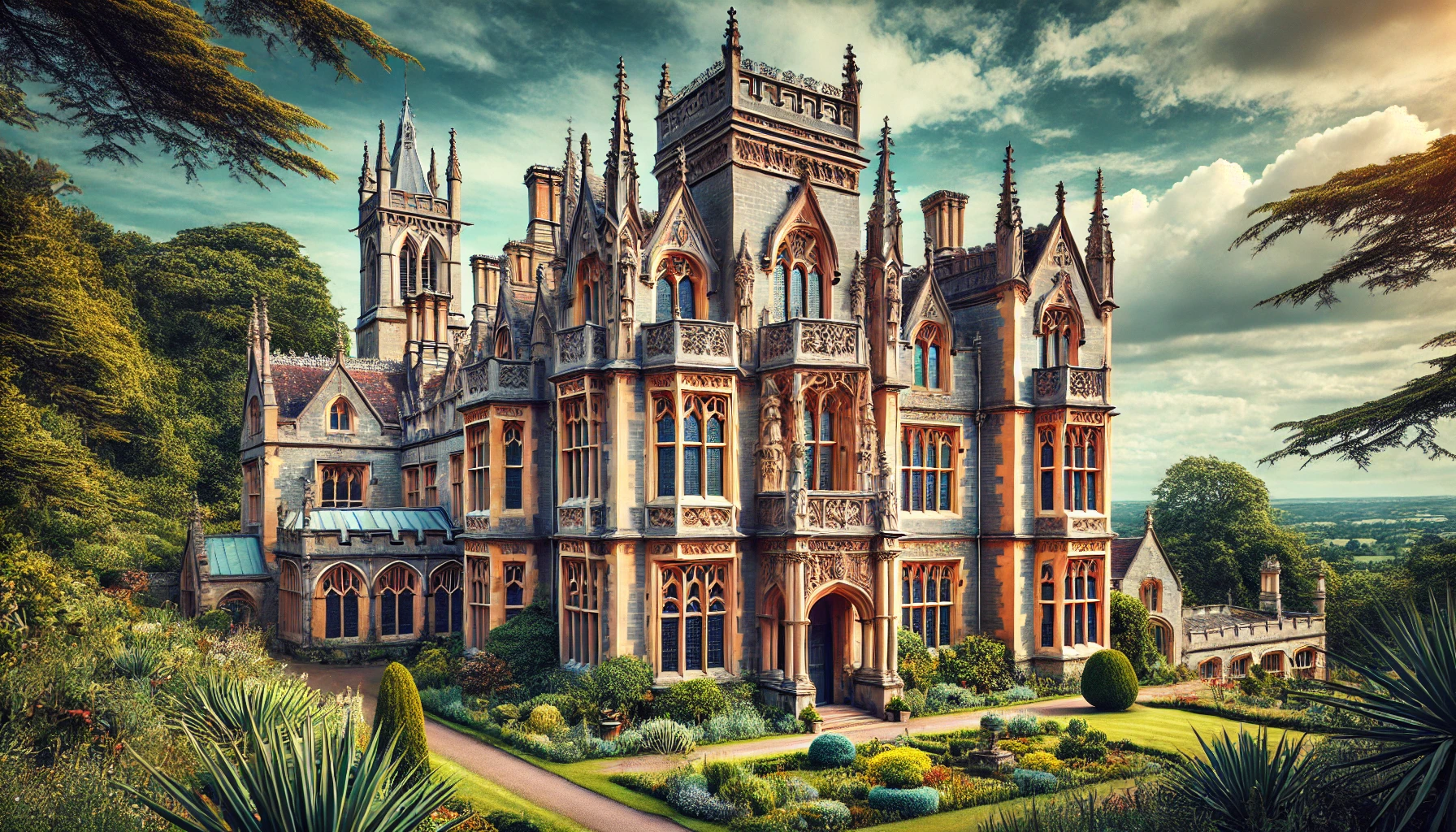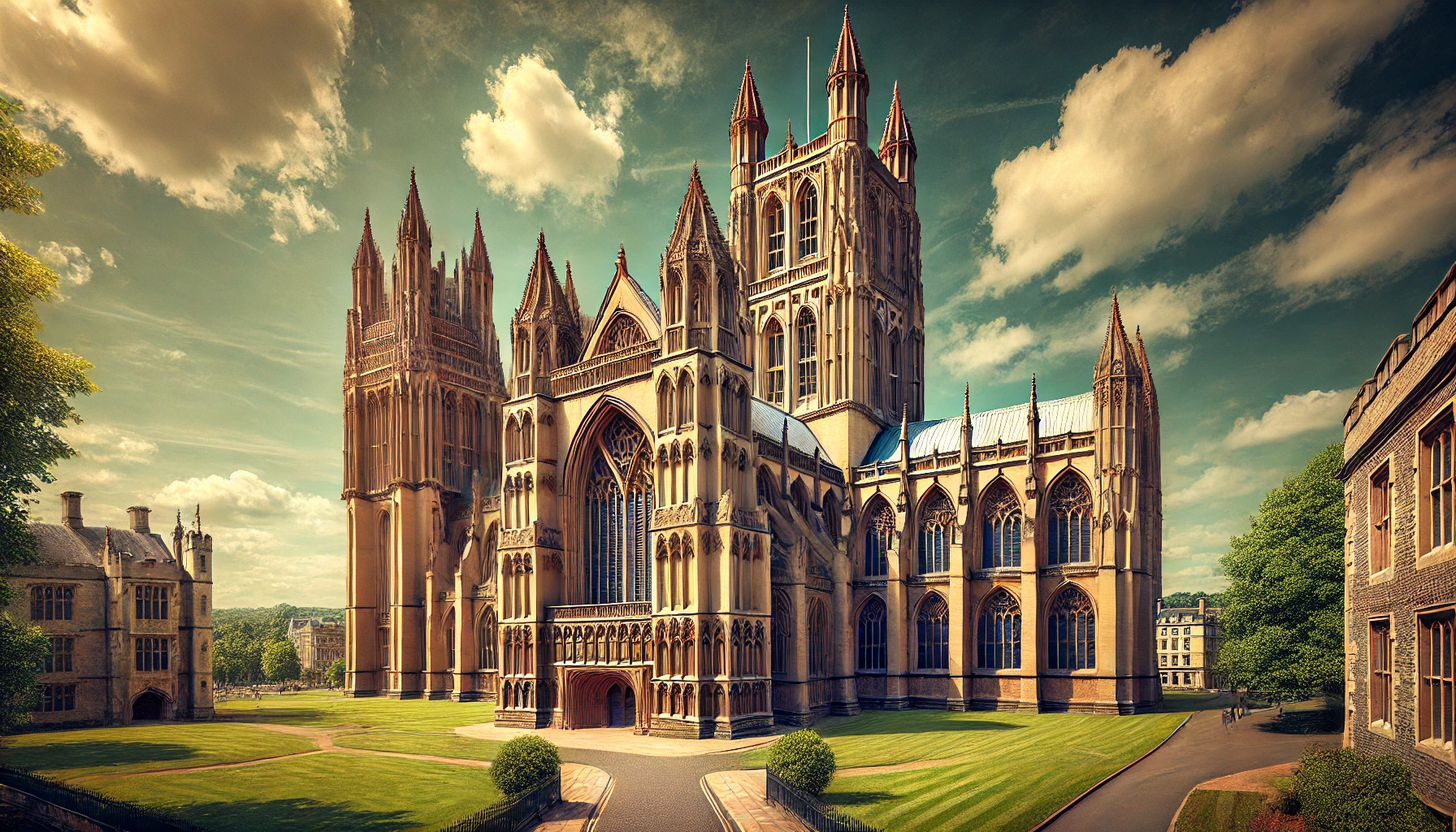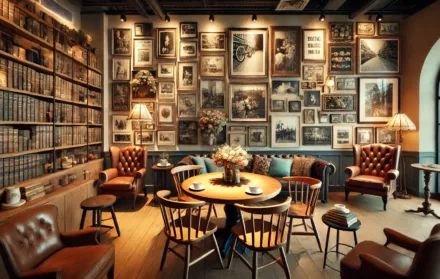
Unveiling Historic Sites in Bristol: An In-depth Exploration Guide
Bristol is a city with a fascinating past, where layers of history reveal themselves through ancient architecture, cultural landmarks, and well-preserved sites. As you stroll through its cobblestone streets or admire the grandeur of its medieval and Georgian buildings, you’ll quickly realize that exploring historic sites in Bristol is like stepping back in time. Whether you’re a history enthusiast eager to learn more about Bristol’s role in maritime trade or simply a traveler intrigued by the stories these old structures hold, the city has much to offer.
For families seeking enriching yet fun outings, Bristol provides numerous opportunities to weave learning into your day out. Visiting historic sites in Bristol can be both educational and exciting, especially when combined with some of the family-friendly activities in Bristol that cater to children and adults alike. Interactive exhibits, kid-friendly tours, and open spaces make it easy to keep little ones engaged while you delve into the city’s storied past. Whether it’s exploring centuries-old castles or discovering the roots of Bristol’s maritime influence, these sites offer something for everyone.
Once you’ve absorbed the rich history, taking a break in the city’s serene outdoor spaces can be the perfect way to relax. Many of the historic sites in Bristol are located near some of the city’s most picturesque green spaces, offering a delightful mix of culture and nature. Enjoy a tranquil moment in one of the gardens in Bristol, where you can sit among well-maintained flora, reflecting on the historical gems you’ve uncovered throughout the day. These gardens are a great way to pause and appreciate both the city’s vibrant history and its peaceful natural beauty.
No historical tour of Bristol would be complete without also indulging in the local flavors that the city’s food scene offers. After a day of exploring historic sites in Bristol, why not treat yourself to some of the city’s culinary delights? The variety of restaurants and cafes in Bristol ensures that whether you’re looking for a quick bite, a gourmet meal, or just a relaxing coffee, there’s something to suit your taste. Many of these establishments are situated close to historic landmarks, so you can enjoy a meal while still taking in the atmosphere of the city’s storied past.
Furthermore, the combination of history and modern culture is one of the things that makes Bristol truly special. While the historic sites in Bristol reveal the city’s past, its vibrant present can be experienced in its thriving arts, food, and community scenes. As you explore the city, you’ll find that history and modern life blend seamlessly, offering visitors the best of both worlds. For history lovers, this mix means that a day spent in Bristol is never just about the past—it’s about how the past continues to shape and influence the city today.
Bristol’s historical attractions are not just sites to see—they are experiences that provide a window into the city’s rich and diverse heritage. Coupled with family-friendly activities, relaxing gardens, and an outstanding culinary scene, exploring historic sites in Bristol becomes an immersive adventure that captivates the mind and delights the senses. Whether you’re a local or a visitor, the stories of Bristol’s past are waiting to be discovered in every corner of this fascinating city.
Bristol Cathedral: A Gothic Masterpiece with Centuries of History

Bristol Cathedral stands as one of the city’s most awe-inspiring historic landmarks, with a heritage that stretches back more than 900 years. Originally founded in 1140 as St. Augustine’s Abbey, the cathedral was transformed into its current form in the 19th century, retaining elements of its original Norman architecture while incorporating Gothic Revival influences. The stunning west front, with its intricate stone carvings and grand towers, serves as a striking introduction to visitors as they approach.
Inside the cathedral, visitors are greeted by the breathtaking nave, a masterpiece of architecture with its vaulted ceilings, elegant pillars, and exquisite stained-glass windows. The Chapter House, one of the oldest parts of the cathedral dating back to the 12th century, features ornate stonework and medieval carvings that depict biblical scenes, making it a significant site for both architectural historians and religious scholars. The tranquility of the Cloister Garden, adjacent to the Chapter House, offers a peaceful retreat where visitors can reflect on the cathedral’s spiritual history.
One of the cathedral’s unique architectural features is the hall church design, where the aisles and the nave are of equal height, creating a sense of openness and grandeur within the building. This design is unusual for English cathedrals and gives Bristol Cathedral a distinct place in the annals of ecclesiastical architecture. The Elder Lady Chapel, another highlight, showcases some of the most detailed medieval sculptures and stained glass in the country, depicting stories from the Bible and the lives of saints.
Over the centuries, Bristol Cathedral has played a central role in the city’s religious, social, and political life. It witnessed key historical events, including the dissolution of monasteries under Henry VIII and the English Civil War. Today, it remains a vibrant center of worship while also hosting concerts, art exhibitions, and community events. Whether you’re an architecture enthusiast, history buff, or simply seeking a moment of serenity, Bristol Cathedral offers a profound connection to the city’s medieval past and its enduring legacy.
Clifton Suspension Bridge: A Symbol of Engineering Brilliance
One of the most iconic landmarks in Bristol, the Clifton Suspension Bridge is not only a feat of engineering but also a symbol of the city’s industrial heritage. Spanning the dramatic Avon Gorge, the bridge was designed by the famous engineer Isambard Kingdom Brunel and opened in 1864. Although Brunel did not live to see the completion of his vision, the bridge stands today as a testament to his ingenuity and the technical advancements of the 19th century.
The Clifton Suspension Bridge stretches over 700 feet between its two towers, offering spectacular views of the gorge, the River Avon, and the surrounding countryside. For visitors, walking across the bridge is a must-do activity, providing not only breathtaking vistas but also a deeper understanding of the bridge’s architectural significance. The slender design, supported by wrought iron chains and a robust stone structure, exemplifies the transition from traditional masonry to more modern forms of construction.
The history of the Clifton Suspension Bridge is as fascinating as its design. Originally conceived as a way to connect Clifton to Leigh Woods, the project faced numerous challenges, including financial difficulties and changes in design. Brunel’s final design, chosen through a competition, reflects his ambition to combine functionality with beauty. The bridge became an essential transportation link and has since become a beloved landmark that represents Bristol’s innovation during the Industrial Revolution.
In addition to its engineering marvels, the Clifton Suspension Bridge holds a significant place in the cultural life of Bristol. It has been the site of important historical events, including the testing of early aircraft by aviator Samuel Franklin Cody and the first modern bungee jump in 1979. Visitors today can explore the Clifton Suspension Bridge Visitor Centre, which offers detailed exhibits about the bridge’s construction, Brunel’s life, and the impact of the bridge on the city’s development.
Whether viewed from afar or crossed on foot, the Clifton Suspension Bridge remains a powerful symbol of Bristol’s pioneering spirit and engineering prowess. Its combination of elegance, practicality, and historical importance makes it an essential stop for anyone exploring Bristol’s rich history.
SS Great Britain: Brunel’s Maritime Marvel

SS Great Britain is another of Isambard Kingdom Brunel’s incredible achievements and a must-see historic site in Bristol. Launched in 1843, it was the world’s first iron-hulled, screw-propelled steamship and the largest vessel afloat at the time. The ship is now permanently docked at Bristol’s Great Western Dockyard, where it has been transformed into a museum that offers an immersive experience of Victorian maritime life.
When visitors step aboard the SS Great Britain, they are immediately transported back to the 19th century. The ship’s restoration has painstakingly recreated the atmosphere of a transatlantic voyage, with detailed reconstructions of the First Class cabins, Steerage areas, and Dining Saloon. Life-sized figures and sound effects enhance the experience, giving visitors a vivid sense of what it was like to travel aboard this revolutionary vessel. The contrast between the luxurious accommodations of the upper classes and the cramped, basic quarters of the lower classes provides insight into the social dynamics of the era.
One of the highlights of a visit to SS Great Britain is the opportunity to explore the engine room, where Brunel’s pioneering screw propulsion system can be seen up close. This innovation was a game-changer in ship design, allowing the SS Great Britain to travel faster and more efficiently than any other ship of its time. Visitors can also walk beneath the ship’s hull, which is housed in a specially designed dry dock that protects it from corrosion, offering a unique perspective on the engineering genius behind its construction.
The SS Great Britain played a pivotal role in maritime history, serving as a passenger liner, troop ship, and cargo vessel over its long career. It carried thousands of passengers across the Atlantic and around the world, from emigrants seeking a new life in America to soldiers bound for the Crimean War. Today, the ship stands as a testament to Bristol’s role in the development of global trade and travel.
The museum also includes the Being Brunel exhibition, which offers deeper insights into the life and legacy of the visionary engineer. Through personal artifacts, interactive displays, and historical documents, visitors can gain a greater appreciation for Brunel’s contributions to engineering and how the SS Great Britain fits into the broader context of his work.
SS Great Britain is more than just a ship; it’s a living piece of history that tells the story of Victorian innovation, ambition, and adventure. For anyone interested in maritime history or the genius of Brunel, this historic site is an essential part of a cultural day out in Bristol.
Blaise Castle Estate: A Historic House and Picturesque Grounds
Set in 650 acres of beautiful parkland, the Blaise Castle Estate is a hidden gem on the outskirts of Bristol. This historic site combines natural beauty with centuries of history, offering visitors the chance to explore both a stately home and an expansive estate that includes woodland walks, ancient landmarks, and stunning views of the Avon Valley. Blaise Castle Estate provides a glimpse into the lives of Bristol’s wealthy elite in the 18th and 19th centuries while also serving as a tranquil escape from the bustling city.
The centerpiece of the estate is Blaise Castle House, a mansion built in 1796 for the prominent Bristol merchant John Scandrett Harford. The house is now home to the Blaise Castle House Museum, which showcases an extensive collection of everyday Victorian objects, including toys, costume, domestic appliances, and kitchenware. The museum offers a fascinating look at daily life in the 19th century, with well-preserved rooms that provide insight into the lifestyles of both the upper-class residents and the servants who worked there.
One of the estate’s most unique features is the folly castle, a picturesque mock-medieval ruin built in 1766 on the estate’s highest point. The folly is surrounded by a network of woodland paths that are popular with walkers and hikers, offering scenic views of the surrounding countryside. Visitors can also explore other ancient landmarks on the estate, including Roman remains, an Iron Age hillfort, and a Gothic Dairy that dates back to the 18th century.
The expansive grounds of Blaise Castle Estate are perfect for a leisurely day out. The estate’s parkland includes formal gardens, play areas for children, and plenty of open spaces for picnics. There’s also a café located within the grounds, where visitors can enjoy refreshments while taking in the picturesque surroundings. Throughout the year, the estate hosts various events, including outdoor theater performances, historical reenactments, and seasonal festivals, making it a vibrant part of Bristol’s cultural scene.
For those interested in exploring both history and nature, Blaise Castle Estate offers the best of both worlds. Whether you’re wandering through the stately rooms of the mansion, walking the scenic woodland trails, or simply enjoying a peaceful afternoon in the gardens, this historic site provides a perfect balance of culture and relaxation.
Tyntesfield: A Victorian Gothic Revival Masterpiece

Nestled just outside Bristol, Tyntesfield is a stunning example of Victorian Gothic Revival architecture and one of the region’s most impressive historic estates. The house was originally built in the early 19th century and later transformed by the Gibbs family into the grand Gothic mansion that stands today. Now owned and preserved by the National Trust, Tyntesfield offers visitors a chance to step back in time and experience the opulence and grandeur of Victorian life.
Tyntesfield is renowned for its exquisite architecture, with its soaring turrets, detailed stone carvings, and intricate woodwork. The house is a masterpiece of Victorian design, blending traditional Gothic elements with the latest innovations of the time. Inside, visitors can explore the lavishly decorated rooms, each filled with period furnishings, artworks, and personal items that belonged to the Gibbs family. The Drawing Room, with its grand fireplace and ornate ceilings, is a particular highlight, showcasing the craftsmanship and attention to detail that went into the estate’s design.
In addition to the architectural beauty of the house, Tyntesfield’s extensive gardens and parkland are equally impressive. The estate spans over 500 acres, with formal gardens, orchards, and woodland areas to explore. The Walled Kitchen Garden is a must-see, offering a glimpse into the self-sufficiency of the estate, with its neatly arranged vegetable beds, fruit trees, and glasshouses. The gardens are meticulously maintained, and visitors can enjoy seasonal displays of flowers, including roses, dahlias, and tulips, depending on the time of year.
Tyntesfield also offers a range of family-friendly activities and events throughout the year. The estate frequently hosts guided tours, workshops, and children’s activities, making it an ideal destination for visitors of all ages. For those looking to delve deeper into the history of the house and the family who lived there, the estate’s knowledgeable volunteers provide fascinating insights into the lives of the Gibbs family and the social history of the Victorian era.
The Chapel at Tyntesfield, another architectural gem, is a stunning example of Gothic Revival ecclesiastical design. Built in the 1870s, the chapel is adorned with intricate stained-glass windows, ornate carvings, and religious iconography, making it a peaceful and reflective space within the estate. Visitors are often struck by the contrast between the grandeur of the house and the quiet serenity of the chapel, which reflects the spiritual life of the Victorian aristocracy.
A visit to Tyntesfield is a journey into the heart of Victorian Britain, where architecture, art, and nature come together to create a truly unforgettable experience. Whether you’re exploring the lavish interiors of the house or wandering through the tranquil gardens, Tyntesfield offers a unique and enriching day out for history lovers and nature enthusiasts alike.
Conclusion: The Enduring Allure of Bristol’s Historic Treasures

Bristol’s historic sites offer a window into the city’s fascinating past, providing visitors with an opportunity to explore the rich tapestry of history, architecture, and culture that has shaped the region over the centuries. From grand cathedrals and engineering marvels to stately homes and maritime relics, these landmarks each tell a unique story, contributing to the broader narrative of Bristol’s development as a center of innovation, trade, and social change.
One of the most striking aspects of Bristol’s historic sites is the diversity they represent. These landmarks span multiple eras, from medieval times to the Industrial Revolution, offering a comprehensive view of the city’s evolution. Whether you are exploring the medieval roots of Bristol Cathedral, marveling at the engineering genius of the Clifton Suspension Bridge, or stepping aboard the pioneering SS Great Britain, each site serves as a testament to the creativity and ambition that has driven Bristol’s progress through the ages.
In addition to their historical significance, Bristol’s landmarks continue to play a vital role in the city’s cultural life today. Many of these sites host a variety of events, exhibitions, and educational programs that engage both locals and tourists, ensuring that the city’s history is not just preserved but actively celebrated. These activities provide a dynamic way to experience history, making it accessible and relevant to modern audiences.
What sets Bristol apart as a historic city is its ability to balance the preservation of its heritage with a forward-looking perspective. The city’s commitment to maintaining and restoring its historic sites, while also embracing new cultural and technological innovations, creates a vibrant and dynamic atmosphere where the past and present coexist harmoniously. This blend of tradition and modernity is one of the reasons why Bristol remains a top destination for history enthusiasts and casual visitors alike.
Ultimately, the historic sites of Bristol offer more than just a glimpse into the past—they provide a rich, immersive experience that invites visitors to engage with the city’s heritage in meaningful ways. Whether you’re drawn to the architectural grandeur, the engineering triumphs, or the stories of the people who shaped Bristol’s history, these landmarks offer a journey through time that is as inspiring as it is educational.





